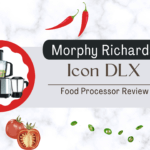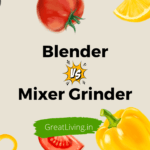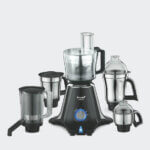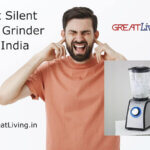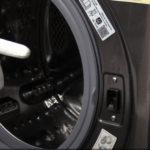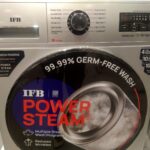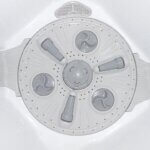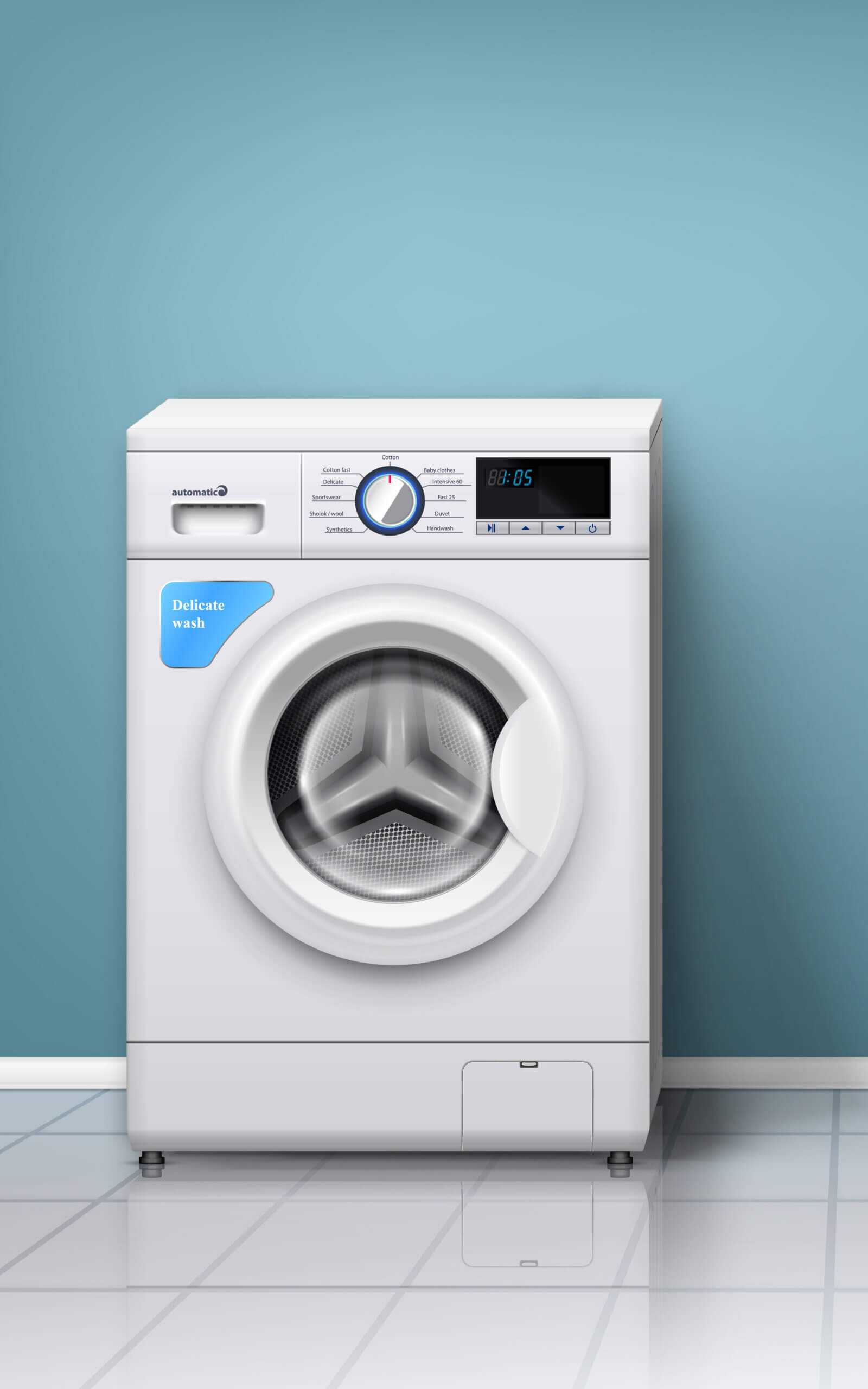Difference Between Mixer and Grinder: A Comprehensive Guide
Synopsis
Mixers, known for their versatility, are expert multitaskers. They excel at combining ingredients, whipping cream, blending smoothies, and kneading dough. Grinders, on the other hand, are designed to break down solid ingredients. They are indispensable for grinding meat, spices, coffee beans, and nuts.
Introduction
In the world of kitchen appliances, mixers, and grinders are two common and indispensable tools.
Yet, they serve distinct purposes and have unique features that make them essential in any well-equipped kitchen.
Whether you’re an amateur home cook or a seasoned chef, understanding the difference between mixers and grinders is crucial for making the most of your culinary endeavors.
In this blog, we’ll delve into the intricacies of these appliances, highlighting their functions, components, and ideal use cases.
Also Read
Mixer – What is it?
Explanation of a Mixer
A mixer is a versatile kitchen appliance designed to combine ingredients, whip, beat, and blend them. It’s a workhorse in the kitchen, simplifying tasks like making dough, whipping cream, mixing batters, and even creating smoothies and shakes.
Components of a Mixer
A typical mixer comprises a motor, a mixing bowl, and a set of beaters or attachments.
The motor powers the beaters, which rotate within the bowl to mix or blend the ingredients.
Common Uses of a Mixer
Mixers are used for various kitchen tasks, including:
- Baking: For preparing cake batters, cookie dough, and bread dough.
- Whipping: To whip cream, egg whites, or mayonnaise.
- Blending: For making smoothies, milkshakes, and soups.
- Kneading: Ideal for roti, bread, and pizza dough preparation.
Types of Mixers
There are different types of mixers available, including:
- Stand Mixers: These are countertop mixers with a fixed stand and a tilting head.
- Hand Mixers: Portable and handheld mixers with detachable beaters.
- Immersion Blenders: A type of handheld mixer with a blending wand for soups and purees.
Advantages of Using a Mixer
- Precise control over mixing speed.
- Versatility for a wide range of recipes.
- Efficient for larger batches of dough or batter.
Also Read
Grinder – What is it?
Explanation of a Grinder
A grinder, on the other hand, is primarily used for breaking down solid ingredients into smaller, more manageable pieces.
It’s the go-to appliance when you need to pulverize, mince, or grind food items.
Components of a Grinder
Grinders consist of a motor, a grinding chamber, and various types of blades or grinding discs.
The motor powers the blades, which chop, grind, or mince the ingredients.
Common Uses of a Grinder
Grinders find their applications in:
- Meat Grinding: For making ground meat or sausages.
- Spice Grinding: To grind whole spices for fresher flavors.
- Coffee Grinding: For freshly ground coffee beans.
- Nut Chopping: For preparing nut butters or finely chopped nuts.
Types of Grinders
Common types of grinders include:
- Mixer Grinder: A hybrid appliance that combines mixing and grinding functions.
- Food Processor: Versatile machines capable of chopping, grating, slicing, and more.
- Coffee Grinder: Specialized for grinding coffee beans to various levels of fineness.
Advantages of Using a Grinder
- Efficient for grinding tough ingredients.
- Precision in achieving desired texture or consistency.
- Versatility for various kitchen tasks.
Key Differences Between Mixer and Grinder
Now that we’ve established what mixers and grinders are, let’s highlight some key differences between them:
- Functionality: Mixers are designed for mixing, blending, and whipping, while grinders are focused on grinding, chopping, and mincing.
- Components: Mixers come with beaters and mixing bowls, whereas grinders have grinding chambers and blades.
- Common Uses: Mixers are best suited for your baking and blending needs, while grinders excel in grinding meat, spices, coffee, and nuts.
- Types and Variations: Mixers come in stand, hand, and immersion variations, whereas grinders include mixer grinders, food processors, and coffee grinders.
- Motor Power: Grinders often have more powerful motors to handle grinding tasks effectively, while mixers prioritize variable speed control.
- Blades and Attachments: Mixers have attachments like beaters, whisks, and dough hooks, while grinders use different types of blades or grinding discs.
- Examples of Suitable Tasks: Mixers are great for cake batter, whipped cream, and smoothies, while grinders are perfect for minced meat, coffee grounds, and nut butters.
Also Read
Differences Between Mixer and Grinder – At a Glance
| Differences Between Grinder and Mixer | Mixer | Grinder |
|---|---|---|
| Functionality | Mixing, blending, whipping | Grinding, chopping, mincing |
| Components | Beaters, mixing bowls | Grinding chamber, blades |
| Common Uses | Baking, blending, whipping | Grinding meat, spices, coffee, nuts |
| Types and Variations | Stand, hand, immersion | Mixer grinder, food processor, coffee grinder |
| Motor Power | Emphasizes variable speed control | Often has more powerful motors |
| Blades and Attachments | Beaters, whisks, dough hooks | Various types of blades or grinding discs |
| Examples of Suitable Tasks | Cake batter, whipped cream, smoothies | Minced meat, coffee grounds, nut butters |
Also Read
When to Use a Mixer
Ideal Scenarios for Using a Mixer
- Baking tasks such as making dough or batter.
- Whipping cream, eggs, or mayonnaise.
- Blending smoothies, shakes, or soups.
Tips for Effective Use
- Start at a low speed and gradually increase as needed.
- Use the appropriate attachments for the task at hand.
- Scrape the sides of the mixing bowl for even mixing.
When to Use a Grinder
Ideal Scenarios for Using a Grinder
- Grinding meat for homemade burgers or sausages.
- Preparing freshly ground spices or coffee.
- Making nut butters or finely chopped nuts.
Tips for Safe and Efficient Grinding
- Ensure ingredients are cut into small, uniform pieces.
- Use short pulses for better control over texture.
- Clean the grinder thoroughly after each use to prevent flavor transfer.
Choosing the Right Appliance
Factors to Consider
- Cooking Habits and Preferences: Consider your cooking style and the types of dishes you frequently prepare.
- Kitchen Space: Evaluate the available countertop and storage space.
- Budget: Determine how much you’re willing to invest in a kitchen appliance.
How to Make an Informed Decision
- Research different models and brands.
- Read user reviews and seek recommendations.
- Assess your specific needs and match them to the appliance’s capabilities.
Case Studies and Real-Life Examples
- Share stories of individuals who made the right choice and how it improved their cooking experiences.
Maintenance and Care
Cleaning a Mixer
- Detach and clean beaters and attachments.
- Wipe down the mixer’s exterior.
- Clean the mixing bowl and ensure it’s completely dry before storage.
Cleaning a Grinder
- Disassemble the grinder components for thorough cleaning.
- Pay special attention to the grinding chamber and blades.
- Lubricate any moving parts as per the manufacturer’s recommendations.
Maintenance Tips
- Regularly inspect cords and plugs for wear and tear.
- Keep the appliance dry and away from water.
- Store attachments and accessories in a designated place.
Prolonging the Lifespan of Your Appliances
- Use the appliances according to the manufacturer’s instructions.
- Avoid overloading the motor or grinding chamber.
- Address any issues promptly to prevent further damage.
Also Read
Safety Precautions
Safety Measures When Using a Mixer
- Ensure the mixer is unplugged when attaching or detaching beaters.
- Keep fingers and loose clothing away from moving parts.
- Never immerse the motor or electrical components in water.
Safety Measures When Using a Grinder
- Handle sharp blades with care and use a pusher tool when necessary.
- Keep hands and utensils away from the grinding chamber during operation.
- Unplug the grinder before
Also Read
Bestselling Food Processor – Usha 3811 vs 3810
I WANT TO BUY A
Additional Resources
MORE ARTICLES
Difference Between Wet Grinder & Mixer Grinder
Difference Between Mixer and Grinder
Difference Between Food Processor & Mixer Grinder
Sujata Dynamix Vs Powermatic – Review & Price
Difference Between Preethi Zodiac and Zodiac 2.0 – Review & Price
Preethi Zodiac 2.0 vs Zodiac Cosmo – Review & Price
Preethi Zodiac Cosmo Review & Price
Preethi Zion Vs Zodiac – Review & Price
Preethi Blue Leaf Diamond Vs Platinum – Review & Price
Philips HL7707 vs Preethi Zodiac – Review & Price
Vidiem ADC Vs Preethi Zodiac – Review & Price
Vidiem Mixer Grinders – Review & Price
Bajaj Fresh Sip Juicer Mixer Grinder – Review & Price
Bajaj REX Mixer Grinder 500W – Review & Price
Philips Juicer Mixer Grinder HL7715 Viva – Review & Price
Philips HL7701 Viva Collection Mixer Grinder – Review & Price
Butterfly Desire Mixer Grinder – Review & Price
About Author
You can ‘meet your author’ on the About Author page here.
RELATED ARTICLES
- Morphy Richards DLX 1000 Review
- Blender vs Mixer Grinder
- Crompton Mixer Grinder 750w Review
- How To Use Preethi Zodiac Mixer Grinder?
- Mixer Grinder Wattage for Home Use & Buying Guide- India 2023
- Best Noiseless Mixer Grinders in India – 2023
YOU MAY ALSO LIKE TO READ
- How to Clean a Top Loader Washing Machine?
- How to Clean an LG Front Loading Washing Machine?
- What is Front Load Washing Machine?
- What is Anti-Tangle in Bosch Washing Machine?
- Do Impeller Washers Tangle Clothes?
- What Is Pulsator in Washing Machine?
- What is Cradle Wash in IFB Washing Machine?
- How To Load a Front Load Washing Machine?
- Best Semi Automatic Washing Machine in India
- Best Front Load Washing Machine in India 2023
- Best Impeller Top Load Washer in India 2023
- How Much Water does Front Load Washing Machine Use?
- How to use Front Load Washing Machine? India 2023
- Front Load Washing Machine Buying Guide – India – 2023
- Which Washing Machine is better – Semi or Fully Automatic in 2024?
- How to Select Washing Machine Capacity in 2023?
- Pros and Cons of Top Load and Front Load Washing Machines India 2023
- Difference between Top Load and Front Load – India (2023)?
- Advantages and Disadvantages of Single Door Refrigerator
- Advantages and Disadvantages of Double Door Refrigerator
- What is the difference between Single Door and Double Door Refrigerator?
- What is Star Rating in Refrigerator? Know Everything!
- Difference Between Direct Cool And Frost Free
- Difference Between 4 Star and 5 Star Refrigerator
- Midea Side By Side Refrigerator Review
- Best Side By Side Refrigerator Under 60000
- Best Convertible Side By Side Refrigerator
- Where is the Freezer in Side by Side Refrigerator?

